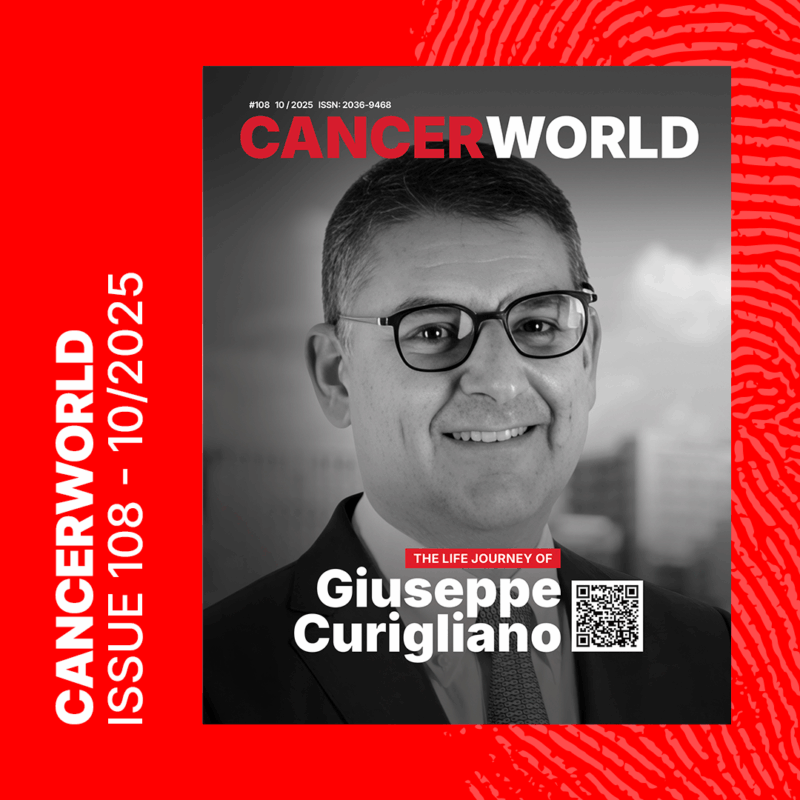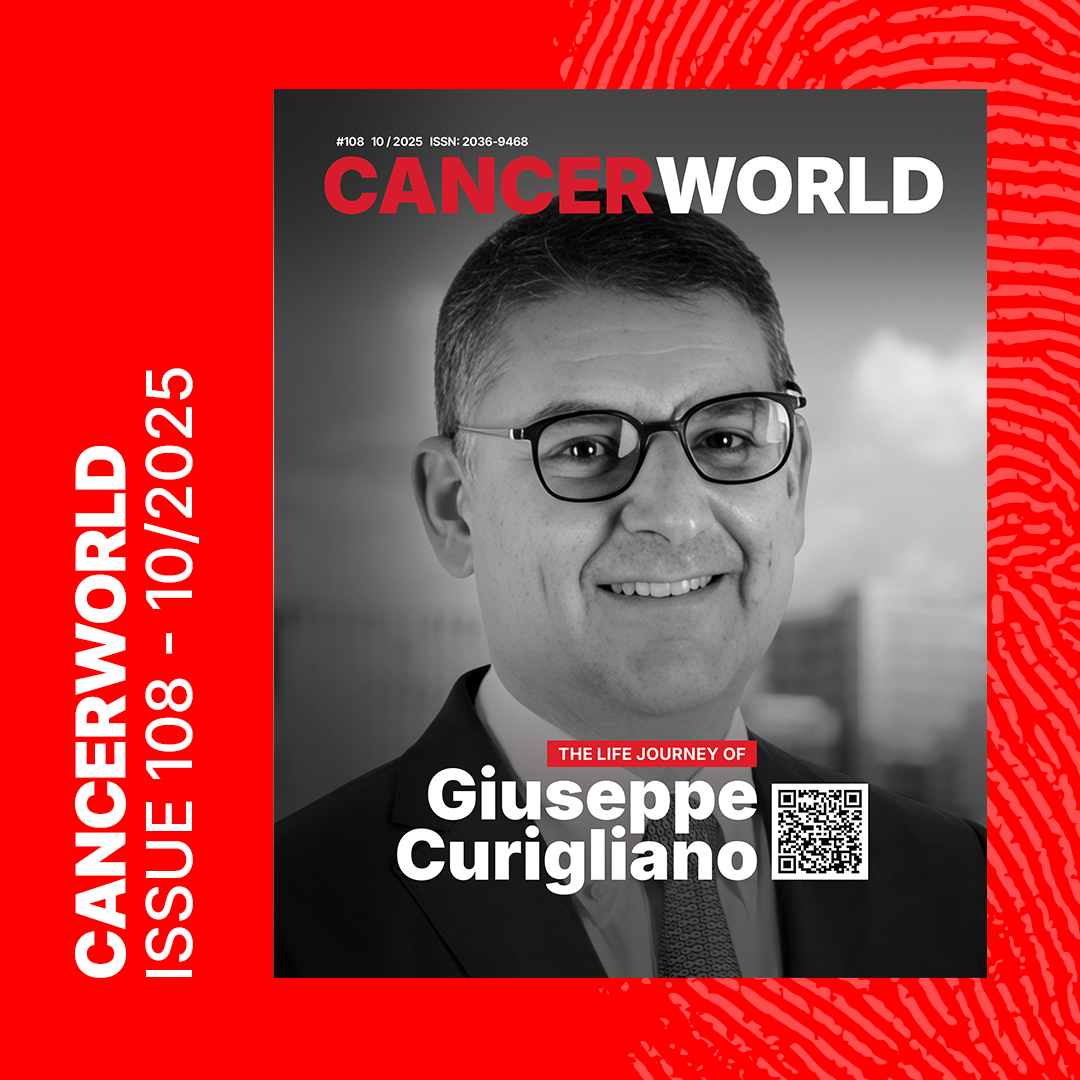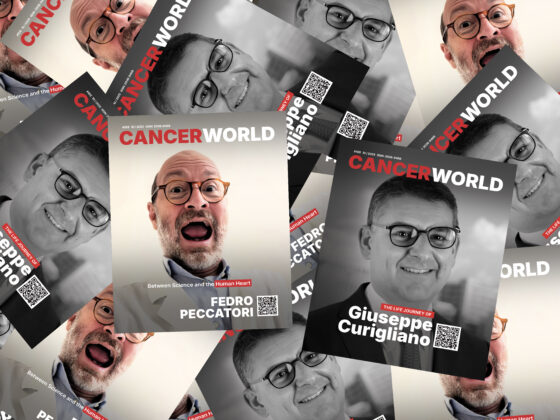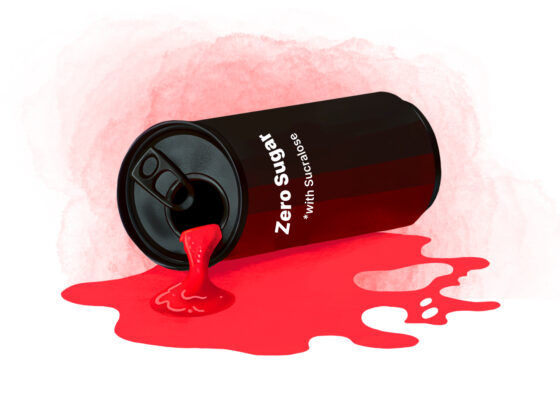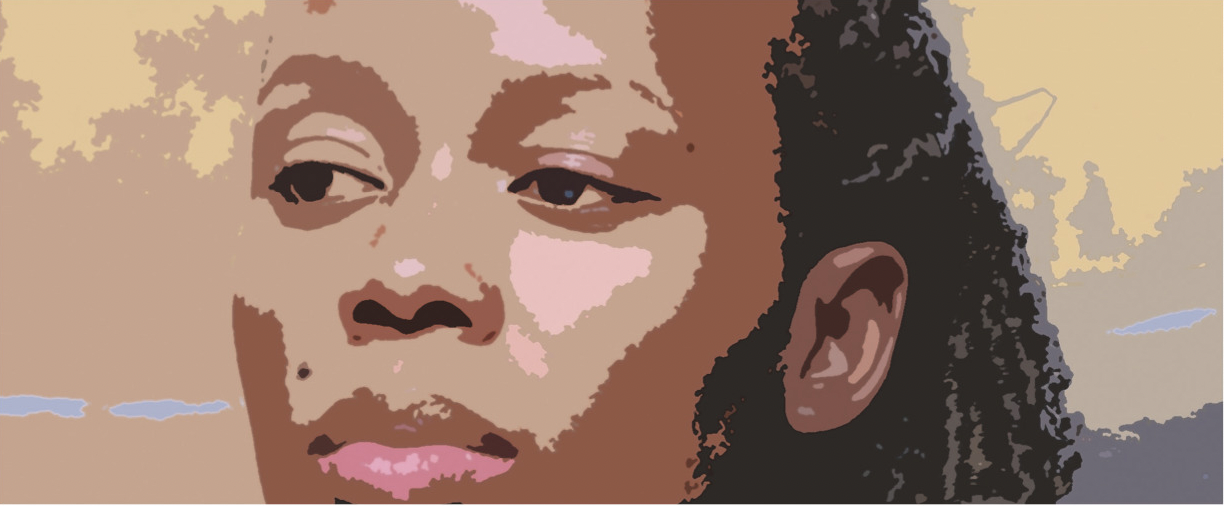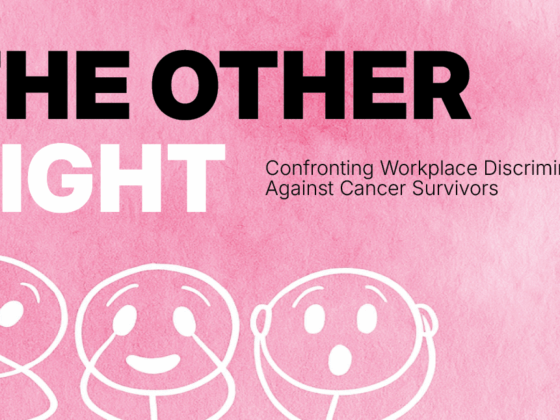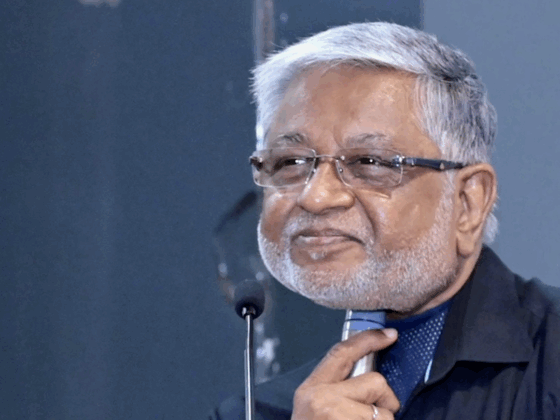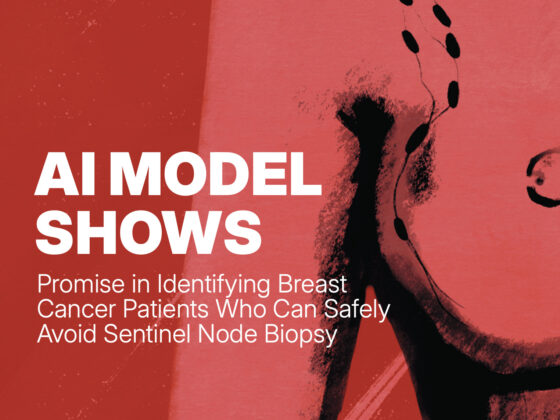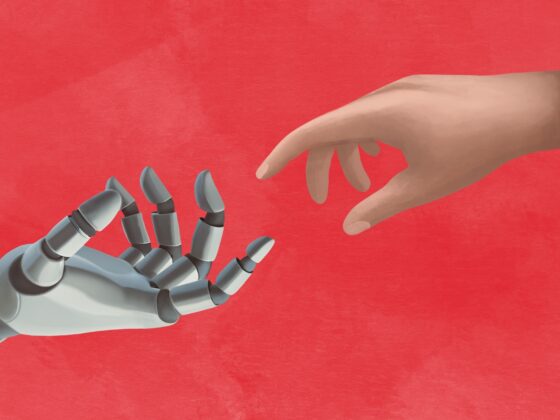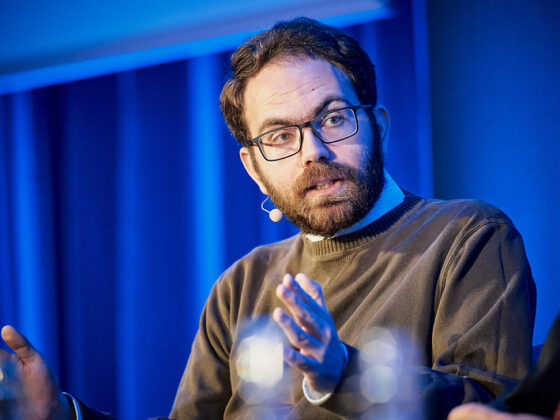From Rome to Milan to ESMO’s presidency — a story of science, courage, and mentorship.
I am in Yerevan. Giuseppe Curigliano is in Milan, just back from Asia.
“JSMO, CSCO, Korea, Japan, China…” he sighs, then laughs.
“Too much travel?” I ask.
“Traveling all over the world is not easy,” he replies, his voice warm, quick, full of energy. “But this is what we love about our job. And now we need to be ready for ESMO.”
And just like that, the interview slips into something else, not questions and answers, but a story. He begins to rewind his life for me: a student in Rome, searching for opportunity; a young Italian doctor stepping into a specialty that hardly existed; and, years later, preparing to lead one of the largest oncology societies in the world.
Rome: Where it All Started
“I didn’t grow up dreaming of being an oncologist,” he begins. “But already in the first or second year of medical school, I felt something. Oncology patients were different — their needs were unmet, their suffering was greater. And at that moment, Italy had just opened its first School of Medical Oncology. That was 1980s Italy. For me, it was an opportunity.”
He recalls those years with clarity.
“I went to Catholic University in Rome, Policlinico Gemelli, because it offered a college where you could live without paying, and you had free access to studies. That was the only way I could continue.”
He pauses. “Every step of my life came because there was an opportunity — and I tried never to miss it.”
His thesis was on colorectal cancer, studying the role of p53. “I remember very well — I did everything myself: cutting sections, performing immunohistochemistry, quantifying the expression. It was hard, but it gave me what I needed most — methodology. And methodology is everything. You learn to create a hypothesis, test it, and accept the result. That mindset later makes you both safe and creative in the clinic.”
Charleston & New York: The World Opens
“After Rome, I wanted to see more. My first stop was the USA, Charleston, South Carolina, in 1991. One of the oldest American cities, full of Civil War history. But what mattered to me was the lab. I was working with flow cytometry, analyzing urine from patients with bladder cancer. In a way, it was an early liquid biopsy.”
It was his mentor in Charleston, Mariano Lavia, who encouraged him to go further. “‘You should go to a larger lab,’ he told me. And he called a friend in New York. That friend was I. Bernard Weinstein at Columbia University. Weinstein was a giant. He was the first one to introduce the concept of oncogene addiction.”
New York became a turning point. “Brooklyn was full of Italians, so I lived there and traveled every day by subway to Columbia. Giuliani had just become mayor, the city was completely different — clean, vibrant, like a diamond. And Columbia… it was science at the highest level.”
He smiles as he remembers. “In Weinstein’s lab, I worked on bladder cancer with Regina Santella, a molecular epidemiologist, studying DNA adducts of 4-aminobiphenyl. That became my first publication, in Carcinogenesis. We literally mailed the manuscript by post. There was no internet. America Online had just appeared. Imagine that world…”
And then, more seriously:
“As a postdoc in New York, I earned five times what you could earn in Italy. For a young man, just starting a career, that was life-changing. It gave me the freedom to focus only on science.”
Back to Italy: Liquid Biopsy Before its Time
“After New York, I came back to Rome,” he says, his voice slowing as if rewinding the film of his life. “I set up in a lab with Giovanna Flamini and Achille Cittadini. And there we started something that, at that time, seemed almost impossible.”
They began isolating tumor DNA from body fluids. “Urine for bladder cancer, stool for colorectal, bronchoalveolar lavage for lung cancer. We had no NGS, no commercial kits. Everything was manual — DNA isolation by hand, gels to prove it was there.”
He smiles. “But we published three papers. And we had guidance from Bert Vogelstein’s group at Johns Hopkins. It was before anyone even used the term ‘liquid biopsy.’ We didn’t know it, but we were already doing it. It was pioneering. It was beautiful science.”
And then his face grows serious. “But you know, in Italy in the 1990s, there was something you couldn’t avoid — military service. It was mandatory. And that is what came next.”
Milan: Destiny Knocks
“They sent me to the Air Force, in a base close to Milan, in Cameri Novara,” he recalls. “I had no choice. But destiny was kind. Because at that very moment, a new institution had just been created in Milan — the European Institute of Oncology, founded by Umberto Veronesi. And the head of medical oncology there was Aron Goldhirsch.”
He laughs as he tells the story. “I applied to meet him. But when I arrived, another doctor tried to do the interview instead. I said: ‘No, I applied for Goldhirsch. I will wait.’ It was strange, maybe rude — but it worked. Aron accepted me. He offered me a very small salary, and he told me: ‘You can work with me, but only in the clinic. No more lab.’ And I said yes immediately.”
That choice — to move into the clinic — was decisive. But it also came with a personal crossroad.
“At that time, my wife — well, she was not yet my wife — was already working in Rome. She had a secure, permanent position as an intensive care physician. And I had to choose: do I go back to Rome, where she was safe? Or do we take the risk of Milan, where nothing was guaranteed?”He stops, his voice softening. “She chose to leave her job and come with me to Milan. That was courage. Without her, nothing would have been possible.
Twice I was lucky in my life — once in my career, and once in my love.”
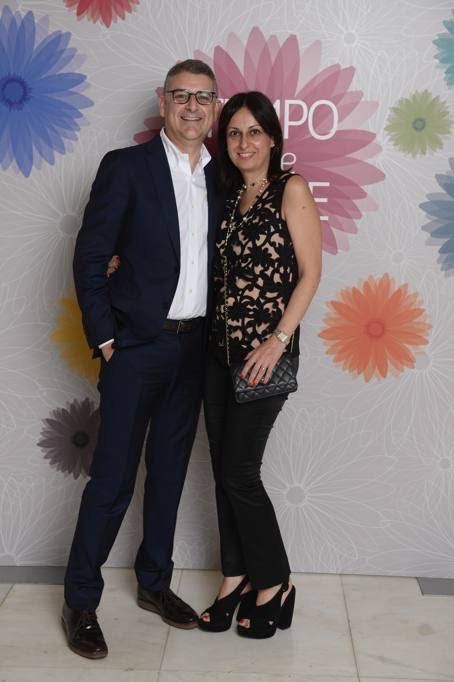
Early-phase medicine, Italian style
“Looking back, I realize everything in my career came down to choices, chances, and the people around me,” Curigliano says. “At IEO, I was lucky to work with Filippo de Braud. He was incredibly creative. He was the first in Italy to use gefitinib in EGFR-mutant lung cancer, the first to use cetuximab in head and neck and colorectal cancer, and the first to try trastuzumab not only as an antibody but as a radioconjugate, working together with Giovanni Paganelli, another genius of nuclear medicine. This was 1998 — they were already doing radioligand therapy, precision medicine before it even had a name.”
His first trial with Filippo was ET-743 (trabectedin).
“I still remember completing something like 7,000 CRFs by hand. I was the second author on that JCO paper, with Nicoletta Colombo as first. We took the drug from Phase I, to Phase II, to Phase III, in ovarian cancer. For me, it was the first time I saw the whole journey of a molecule — from a new idea in a Phase I unit to a published late-phase study.”
And what stayed with him was the sense of community.
“At that time, only a handful of people in Europe were doing Phase I studies — Franco Cavalli and Cristiana Sessa in Lugano, Jean-Jacques Armand at Gustave Roussy. We were very few, but we were connected. And in the US, I had the chance to collaborate with Pat LoRusso in Detroit. It was a small world of pioneers.”
He pauses, then adds quietly:
“You realize quickly that science is not just data. It is trust, mentorship, and friendship. That is how you grow.”
Breast Cancer and the Art of Asking the Right Question
“Those years with Filippo and the early-phase community taught me how a drug is born. It was invaluable. But at some point, you understand that you need to narrow your focus. You cannot do everything. You need to go deeper into one disease.”
And that is when Aron Goldhirsch returned to the center of his story. “Aron was already a leader in breast cancer.“ Working with Aron gave me the chance to ask different questions. Not only about new drugs, but about how to best use the therapies we already have.”
He remembers one of the first.
“I was thinking whether all HER2-positive tumors need the same treatment. What about the small ones — less than one centimeter? What we showed was that maybe, for these very small tumors, you could consider de-escalation,” he says.
“I remember very well, when I did that study, I moved for several months to the Dana-Farber Cancer Institute, where Eric Winer was leading the service. I presented my data, he looked at it and said:
“This deserves a trial.”
Sara Tolaney designed what became the APT study. And today, short-course paclitaxel with trastuzumab is the standard for small HER2-positive tumors. He smiles at the memory. “That’s how things are connected. You start with a retrospective analysis in Italy. You bring it to Boston. A trial is born, and practice changes worldwide. All from one question.”
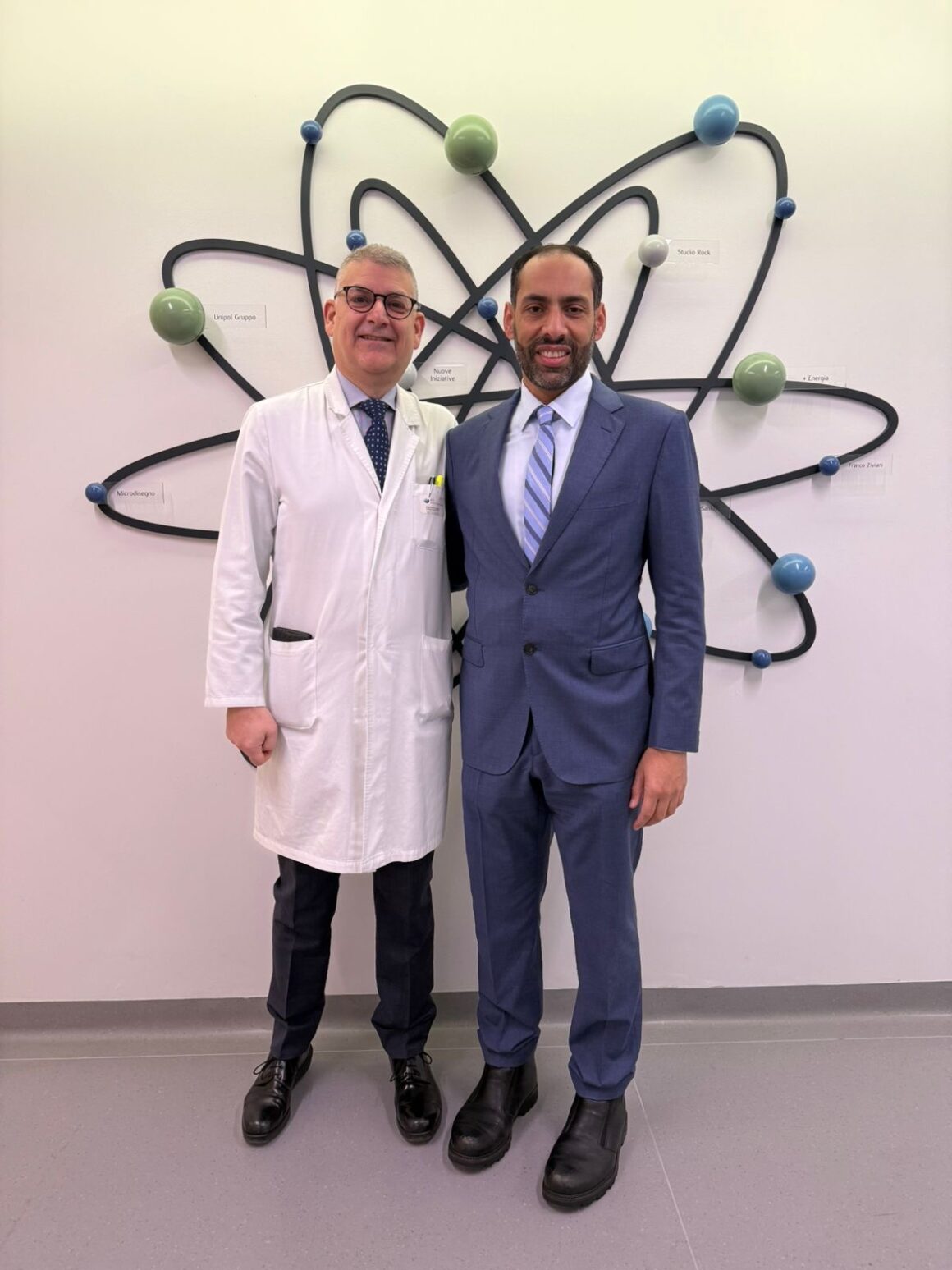
Leadership and Responsibility
“I continued my training at the European Institute of Oncology. I went from assistant to vice director, and finally to co-director of Aron’s division. Those years were full of energy. We were working side by side, managing patients, building clinical research, and shaping the future of the department. For me, it was a time of growth.”
He pauses. “Working with Aron gave me discipline and vision. But there is always a moment in your career when you feel the need for independence — when you must take responsibility for your own direction.”
That independence came gradually, through international work. “During those years, I became more and more involved in St. Gallen, which was, and still is, the most important meeting on early breast cancer. At first, I was just helping — analyzing, preparing, learning. And then came the turning point. When Aron and Richard Gelber decided to step away, the committee asked me to take on the role of scientific chair. I was only 42.”
“Suddenly, I was no longer the junior collaborator — I was the one who had to lead.”
He smiles at the memory, half with pride, half with awe. “To organize St. Gallen meant bringing the very best people together, building consensus, and making recommendations that would shape practice worldwide. It was daunting, yes. But it was also the turning point when I understood that I was ready to stand on my own.”
The Power of Peers
He leans back, a smile spreading across his face as if a scene from long ago has returned. “I remember in 2002 or 2003, we were in Romania, at a very small meeting. There were legendary leaders Edith Perez and Martine Piccart — and then a group of very young doctors presenting cases.”. There were four of us, very young then: Fabrice André, Javier Cortés, Nick Turner, and me. ”
He smiles. “Now, twenty years later, Fabrice has been ESMO President, Javier and Nick are international leaders, and I will also soon be president of ESMO. You see how these paths cross, how the young doctors presenting cases in a small meeting become the ones leading global oncology.”
He calls it “a career of intersections.”
“In life, you meet people who shape you. Some inspire, some push you to be better.
Working alongside colleagues like Fabrice or Javier, and Nick — who I honestly believe are even better than me — gave me energy. You learn from their ideas, and you try to improve yourself.”
He reflects quietly. “That is the essence of science: the exchange of ideas. Learning from people who see something you don’t. That is what moves us forward.”
Becoming a Professor, Becoming a Mentor
In 2014, Curigliano was appointed professor at the University of Milan, thanks to Gianluca Vago, the actual Head of the Department of Oncology and Hemato-Oncology and Gabriella Pravettoni, the past director: two friends and mentors who strongly supported me. “That was another turning point,” he says. “When you move into an academic leadership role, your perspective changes. It’s no longer only about your own career — it’s about the people who are starting theirs.”
He leans forward, speaking with quiet conviction.
“When you become a leader, you must understand: your real job is to work for other people. To build the careers of those younger than you. To support them, sponsor them, protect their dreams.”
He names them one by one: Paolo Tarantino, Dario Trapani, Antonio Marra, Paola Zagami, Stefania Morganti, Carmine Valenza, Chiara Corti, Luca Boscolo Bielo, Lorenzo Guidi, Liliana Ascione, and many more. “They came as residents, and now they are making their own mark globally. That is what matters most to me — to give them what I didn’t have, to see them go further than I could.”
And then, almost tenderly:
“Some of them, I see, like children. My wife and I don’t have children, but I feel this same responsibility toward my mentees — to help them grow, to make sure they have the opportunities they deserve. That is the real legacy.”
He laughs suddenly, remembering a moment from the ESMO elections.
“At ASCO in Chicago, OncoDaily organized a party. They made a poster with my picture — I didn’t even know about it. I wasn’t there. But suddenly my phone kept buzzing with messages from my fellows. They were taking pictures with the poster, sending them to me: ‘Professor, look, it’s you!’”
He shakes his head, smiling. “For them, it was joy, pride. And for me, that was worth more than any election. To feel their excitement, their belief — that was the real victory.”
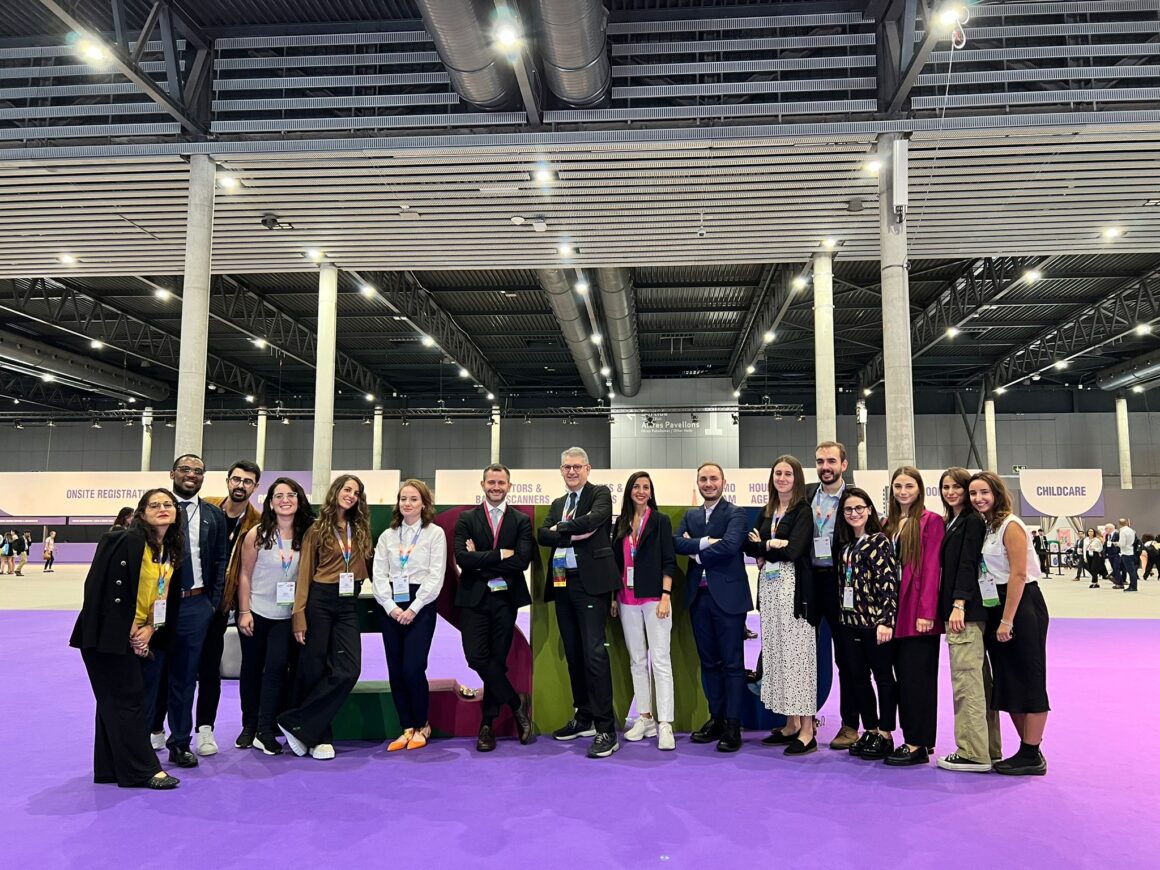
Milan Today, ESMO Tomorrow
Now, settled in Milan with his wife, he reflects on the road ahead. “Milan has transformed. It is one of the great cancer hubs of Europe, with thousands of patients. For oncology, scale matters. That is why I stayed here.”
As he prepares to lead ESMO, his voice softens.
“The true engine of oncology is not the senior professor giving the keynote. It is the young doctor finishing a CRF at midnight, having a better idea for the next patient. They are the future. My job is to give them the tools, the mentorship, and the belief to change the world.”
He reflects on the arc of his life.
“Every stage has its role. First, to be challenged. Then to ask questions. Then, to change things. Later, to give space to support others, to let them grow, to build something that lasts.”
And finally:
“Believe me,” he says. “Every achievement in my life came from people around me — mentors, peers, my wife, my students. If I am remembered, I hope it is not for my titles, but for helping others rise and never forget that the future will never mirror exactly the past.”
From a young student cutting slides in Rome to the next president of ESMO, Giuseppe Curigliano’s story is proof that oncology is not built on dogma, but on questions, courage, and the will to lift others higher.

